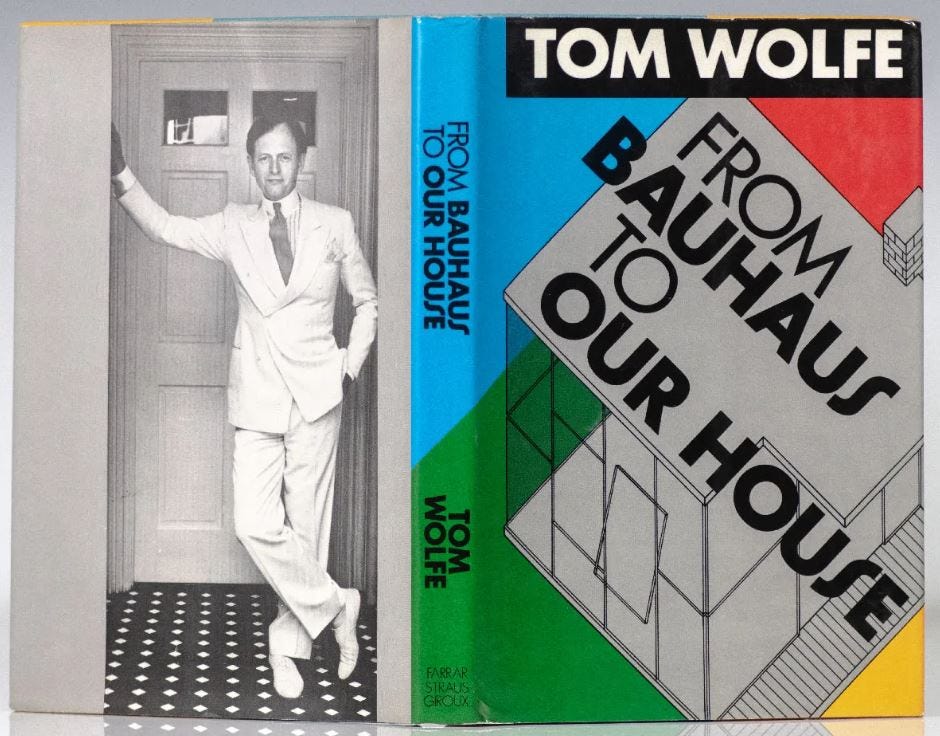I sometimes think that if I hadn’t gotten into journalism and strategic communications, I might have taken an architectural path. My graphic-artist-inclined son is currently considering such a route, which is an exciting possibility.
Takoma Park, Maryland, where I live, certainly has some interesting architecture sprinkled throughout its early 20th century buildout, and there are a lot of architectural-related discussions on the active web boards in town, so it wasn’t too surprising when I grabbed Tom Wolfe’s 1981 book of essays on architecture, From Bauhaus to Our House, out of one of my town’s Little Free Libraries.
(Wolfe is one of my favorite writers, and his 1968 classic The Electric Kool-Aid Acid Test is one of my favorite books.)
It’s amazing how little has changed in the architectural profession in the 44 years since he wrote From Bauhaus. Take these gem commentaries just in the first few pages:
Every child goes to school in a building that looks like a duplicating-machine replacement-parts wholesale distribution warehouse. Not even the school commissioners, who commissioned it and approved the plans, can figure out how it happened.
Every great law firm in New York moves without a sputter of protest into a glass-box office building with concrete slab floors and 7’10” high concrete slab ceilings and plaster board walls and pygmy corridors—and then hires a decorator and gives him a budget of hundreds of thousands of dollars to turn these mean cubes and grids into a horizontal fantasy of a Restoration townhouse. Without a peep they move in!—even though the glass box appalls them all.
Wolfe is interested in examining the relationship between architects and their clients, which he calls “eccentric” and “perverse.” There is proof that his musings are on to something because many critics at the time of its release panned his analysis and claimed he knew nothing about the subject. To me, that may be why the book is so enjoyable and insightful because, like engineers, architects often have no sense of creativity. One critic wrote, “What Tom Wolfe doesn't know about modern architecture could fill a book.”
But if Wolfe knew nothing, his know-nothings sure are entertaining. Take these for example:
Napoleon wanted to turn Paris into Rome under the Caesars, only with louder music and more marble. And it was done. His architects gave him the Arc de Triomphe and the Madeleine.
But after 1945, our plutocrats, bureaucrats, board chairmen, CEOs, commissioners, and college presidents undergo an inexplicable change. They become diffident and reticent. All at once they were willing to accept that glass of ice water in the face, that bracing slap across the mouth, that reprimand for the fat on one’s bourgeois soul, known as modern architecture. And why? They can’t tell you. They can’t figure it out themselves. It makes their heads hurt.
Stay tuned as I’ll be exploring more of this collection.





